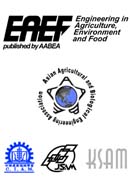Volume 14, Issue 3
Displaying 1-5 of 5 articles from this issue
- |<
- <
- 1
- >
- >|
Research article
-
2021Volume 14Issue 3 Pages 73-79
Published: 2021
Released on J-STAGE: July 16, 2022
Download PDF (1770K) -
2021Volume 14Issue 3 Pages 80-85
Published: 2021
Released on J-STAGE: July 16, 2022
Download PDF (1185K) -
2021Volume 14Issue 3 Pages 86-94
Published: 2021
Released on J-STAGE: July 16, 2022
Download PDF (3166K) -
2021Volume 14Issue 3 Pages 95-101
Published: 2021
Released on J-STAGE: July 16, 2022
Download PDF (3241K)
Errata
-
2021Volume 14Issue 3 Pages 102
Published: 2021
Released on J-STAGE: July 16, 2022
Download PDF (73K)
- |<
- <
- 1
- >
- >|
